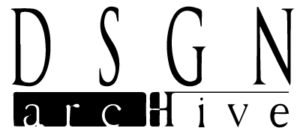top architecture design thesis 2020


SCHOOL OF PLANNING AND ARCHITECTURE
DELHI, INDIA

Design thesis authored by
SUBHAM JAIN
share
THESIS SPECIFICATIONS
Thesis Title : AQUAVILLE – FLOATING HABITATS
Project type: Rehabilitation in response to climate change
Year of completion : 2020
Climate Change has become a reality much faster than all scenarios predicted. It is not just an environmental issue, as too many people still believe. It is an all-encompassing threat, to health, to agriculture, to peace and security, to the very ground millions of people live on. By 2100, almost 48 island nations are at the brink of disappearing, and the irony is that we are making them disappear. Culture, Tradition, Flora, Fauna, and most importantly their Homes are all slowly fading with time, just like the islands they live on.
This is resulting in Climate Refugees (a person who has been forced to leave their home as a result of the effects of climate change on their environment), which further leads to a total culture shock, loss of cultural norms, religious customs, and social support systems, changes in identity and concept of self. If rising sea levels aren’t directly affecting your life, the other extreme weather events from climate change will. Around the same time when some of these islands disappear, southern parts of Europe will turn into a desert, coral reefs will die, rainforests will crumble, natural disasters will become more frequent and severe, but for islands like Lakshadweep, Tuvalu, Kiribati it’s already too late, they are the first to pay the price of rising sea levels, it’s time we take things seriously and ask ourselves what kind of future we want to build for our grandkids and generations to follow.
Fleeing is not an option and Leaving is not the solution. This project is about people who stand to lose everything—people who may need to flee their native home and never come back. These people are refugees, but they’re not running from war or an oppressive government. They’re seeking asylum from climate change.
‘‘Climate change is not a problem for tomorrow or the future, it’s a problem for today, and now’’
Aquaville is an alternative take on the idea of floating cities. This project posits a future architecture that envisions a new understanding of Aquatecture. In a world of changing circumstances and rising sea levels, our cities have to be future proof. This project rethinks how we design, build, live and share our future homes, neighborhoods, and cities. It envisions a new city – rehabilitating climate refugees, safeguarding culture, sense of belonging, and also promotes Seasteading. The aim is to create a completely modular city that is adaptable, sustainable, customizable, self-sufficient, and disaster resilient. By following the 17 SDGs by the United Nations, this city aims to promote and ensure more fulfilling ways of living together without succumbing to foreseeable environmental changes. Aiming to merge the gap between residents and users in the new urban context, a walkable city that is highly interconnected in terms of urban network and building arrangements, resulting in a more dynamic urban living.
WHY
Aquaville aims to promote and ensure more fulfilling ways of living together without succumbing to foreseeable environmental changes and at the same time aiming to safeguard culture, flora, fauna and most importantly their homes.
WHAT
Aquaville is manifested through a serious of floating structures that provide the infrastructure for the practice of everyday living – including but not necessarily limited to the residential, social, economic and cultural domains of island life.
HOW
Aquaville is a completely modular city which is customizable, self-sufficient, disaster resilient and an adaptable solution, thus can be replicated in regions which have started to succumb to rising sea levels. It aims to rehabilitate people of such regions and also act as a place for sea steading.
VISION
Focusing on creating a Design that is built to evolve rather than just last. A livable environment that suits our unique needs, adapts to the pulse of daily life and offers us the support systems and social life we seek.
Living on water has always been a fantasy Utopian city but now it has become an impending trend for our future generations. Rather than proposing a single design, Aquaville lays down a system that results in endless possibilities. The fundamental building block is the pontoon which is made up of expanded polystyrene and e’concrete. Modular neighborhoods of 1.5 hectares create thriving self-sustaining communities of up to 250 residents with mixed-use spaces for living, working, and gathering. By clustering neighborhoods and dock modules, larger cities of the required population can be formed. Residents can easily walk, bike or boat throughout the city using electric vehicles. All the built structures are kept below 3 stories to create a low center of gravity and resist wind. Shared amenities like communal green farms, animal husbandry, schools, hospital, and recreational spaces allow residents to embrace sharing culture. All communities regardless of the size will prioritize locally sourced materials for building construction. This project not only focuses on creating a living human ecosystem, it also caters to the marine ecosystem, the e’concrete part of the pontoon ensures the growth of coral reefs and oysters rejuvenating marine life and also create a bio protection layer. These Floating cities can be fabricated onshore and towed to their final site, reducing construction costs. The first phase of Aquaville is calibrated to rehabilitate people of the vulnerable sinking islands and cities around the globe.
Keywords
Aquatecture Floating-Habitats Modular-cities Future-farming
the end
Copyright information: ©️ Student author 2021. Prior written authorization required for use.
Request permissions: If you wish to use any part of the documentation forming part of the undergraduate thesis submitted to DSGN arcHive, please seek prior permission from the concerned student author through the respective college/university.
Exclusion of liability: DSGN arcHive and its owner do not undertake any obligation to verify the ownership of any content submitted for publication/broadcast on this website and shall not be liable for any infringement of copyright by, or unauthorized use of, such content.
HOMEPAGE
Copyright © 2025 DSGN arcHive
